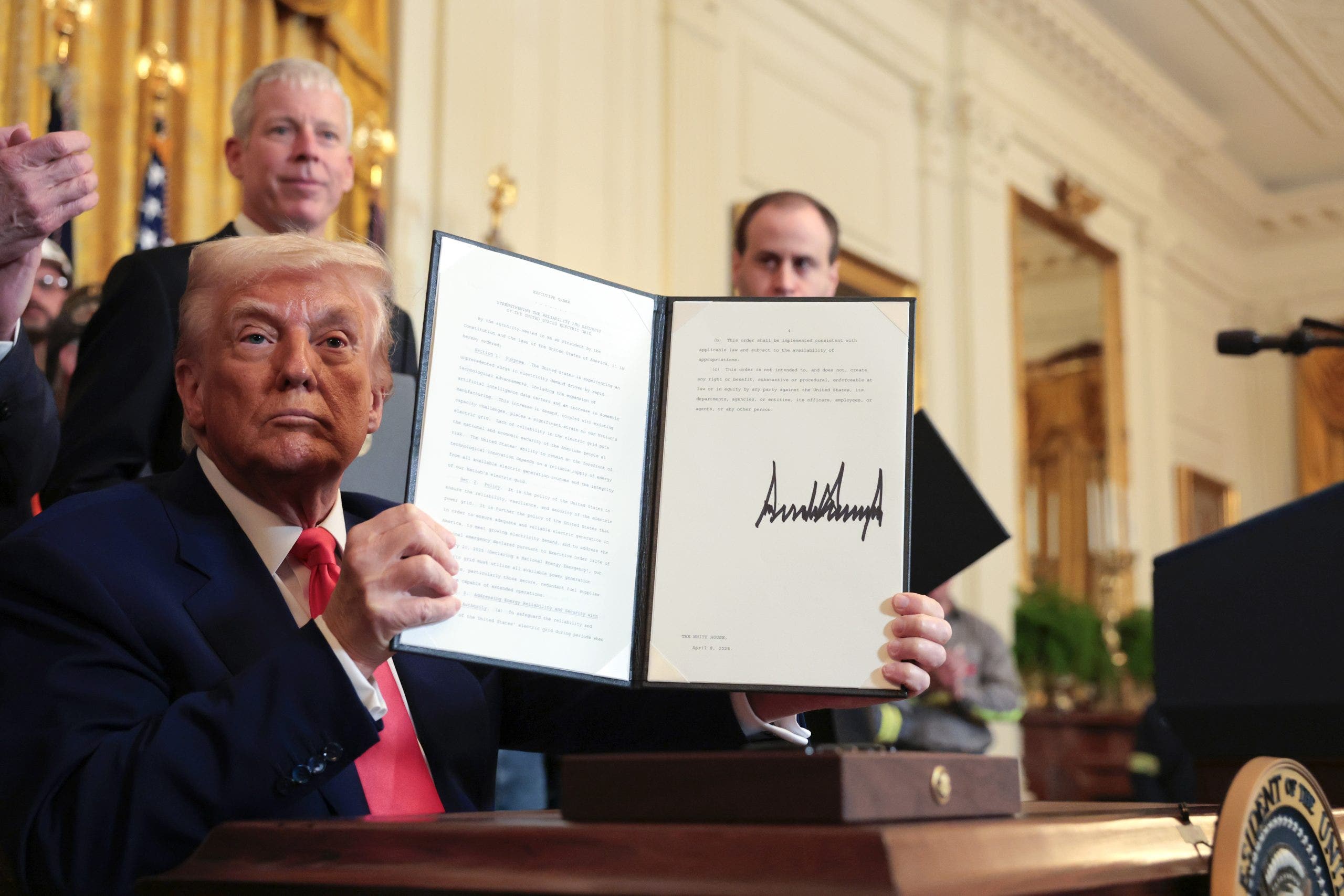On a sunny day in June, a group of visitors from Florida stopped by a sculpture of a floatplane outside the Utqiagvik airport.
They weren’t just exploring the local attractions: The family came to see the memorial created by Oklahoma artist and veteran Bob Bell — their father, grandfather and great-grandfather.
More than 40 years ago, Bell sculpted a tribute to aviator Wiley Post and performer and humorist Will Rogers, who both died in a 1935 plane crash about 15 miles from Point Barrow. The airplane, which had been modified for their planned flight to Russia, stalled after takeoff and dived into a lagoon.
The two men from Oklahoma were beloved across the U.S. for their contributions to aviation and entertainment — Post was the first aviator to fly solo around the world, and Rogers was a Hollywood and vaudeville icon whose newspaper columns were immensely popular. They died instantly.
Bell’s commemorative sculpture, a bronze replica of the plane flown by Post and Rogers, was placed outside the Wiley Post-Will Rogers Memorial Airport in Utqiagvik in the early 1980s. This summer, the late sculptor’s family traveled from the Lower 48 to visit Alaska, experience the whaling festival Nalukataq and, most importantly, see the memorial he created.
“It was like a dream come true. After many years of thinking about it and planning, seeing it all happen — it was really an emotional experience,” Bell’s granddaughter Erika Giannella said. “Knowing that my granddad touched it and we got to touch it, and letting my boys be around it, it was really awesome. There’s really no word for having the three generations there.”
Bob Bell, who died in 2002 at the age of 75, grew up hunting and fishing in the town of McAlester, Oklahoma. He joined the Marines out of high school, serving during World War II, and was wounded in action on Iwo Jima. After the war, Bell earned his bachelor’s degree in animal husbandry from Oklahoma State University, rode bulls and became a cattle rancher. Eventually, he created his own Bell Ranch in Okmulgee, Oklahoma.
“He is my hero,” Giannella said. “He was a U.S. Marine in World War II and received a Purple Heart. He was a cowboy rancher and a strong advocate for the environment and, obviously, an amazing artist. I feel so lucky to be his granddaughter.”
Bell always made time for his family and even on busy days found a moment to take his grandchildren horseback riding, Giannella said.
“We grew up on his ranch in the summers and at Christmastime,” Bell’s grandson Brian Hatlelid said. “He taught us how to horseback ride, saddle the horse, and I remember sitting in his lap and doing wax (sculptures) with him.”
Bell’s artistic path started with carving animal figures from wood. When he was in his 40s, he taught himself to carve from wax and then to make bronze sculptures, using a shed in his backyard as a shop. Coming from Choctaw Nation descent, Bell captured in his art Indigenous culture and wildlife.
Bell created about 50 sculptures throughout his lifetime and won numerous awards for his art. His work “Dripping Springs” stands in front of Okmulgee City Hall.
:quality(70)/cloudfront-us-east-1.images.arcpublishing.com/adn/MRLJQU6MOJEGZPVS5V5GOFUGP4.JPG)
In 1982, the Lions Clubs of Utqiagvik and Claremore, Oklahoma, commissioned Bell to create the sculpture placed at the Wiley Post and Will Rogers Plane Memorial, in memory of the two late Oklahomans.
Bell never got a chance to see his sculpture on site in Utqiagvik. His family made it a goal to visit the memorial — a trip they’ve been preparing for over the last five years.
When Giannella joined an Utqiagvik Facebook group and asked whether the memorial created by her grandfather still existed, she said, many people responded with pictures and updates. Resident Mary Lum Patkotak helped the family plan their Alaska trip around Nalukataq.
“I’m happy they were able to experience this traditional celebration in the same community that their grandfather’s beautiful monument is located,” Patkotak said.
[Counting in Iñupiaq, Alaska students build clocks using Kaktovik numerals]
Arriving at the end of June, the family visited Fairbanks and Anchorage, then flew to their main destination — Utqiagvik. The group included Bell’s daughter Karen Hatlelid, son-in-law Joe Hatlelid, granddaughter Erika Giannella, grandson-in-law Bruno Giannella, grandson Brian Hatlelid and Bell’s great-grandsons Lukas Giannella, 11, Liam Giannella, 9, and Lincoln Hatlelid, 10.
Patkotak greeted the family at the airport and took them straight to the memorial. As they took pictures, they spoke to a few locals and tourists about how they were connected to the sculpture and the place, Erika Giannella said.
In town, the children spent time playing along the beach and the whole family dipped their toes in the Arctic Ocean, surprised by the chunks of ice still floating by.
“It was the most simplest things that we did, you know, just being there,” Giannella said. “All the people were really welcoming.”
:quality(70)/cloudfront-us-east-1.images.arcpublishing.com/adn/U6UJU4EQERGQFDBVF5NL3VOZKM.JPG)
During Nalukataq, the Bell family came to Simmonds Field and sat next to the Patkotak family. The Patkotaks provided them with bowls, spoons and seasoning for the food that was served — including whale, Eskimo doughnuts, caribou soup and geese soup, among other treats.
“They were introduced over the microphone and welcomed by the community,” Patkotak said.
Giannella described how Utqiagvik residents explained the ways to eat different foods, and their significance.
“We really got to immerse in the culture and in their festival,” Giannella said. “It was incredible seeing the whole town out there.”
:quality(70)/cloudfront-us-east-1.images.arcpublishing.com/adn/63RX5WDUMNAA7PF3LGTLVQBNKY.JPG)
The visitors admired the traditional regalia that whaling crews donned later in the day and participated in the blanket toss, with children jumping on the sealskin blanket and a few adults in the group helping hold it up.
For the last part of the festival, Inupiaq dancing, the Bell family sat in the Eben Hopson Middle School gym and watched different crews take the stage. Then whalers with similar roles were called to dance — like all captains, or all harpooners — before visitors were called up to dance too.
For Lukas Giannella, 11, his favorite part of the feast was trying the pickled whale meat. For Brian Hatlelid, it was all about feeling welcome at the celebration.
“The favorite part of that whale festival is being so graciously included in a really special cultural event. They share things with you, and they’re really conveying something that’s very important to them and their culture and their families, their communities,” Hatlelid said. “The Lower 48 does not have that tradition.”

:quality(70)/cloudfront-us-east-1.images.arcpublishing.com/adn/V6YWVT54SVAALASVPFA7TWCR6Q.JPG)


























